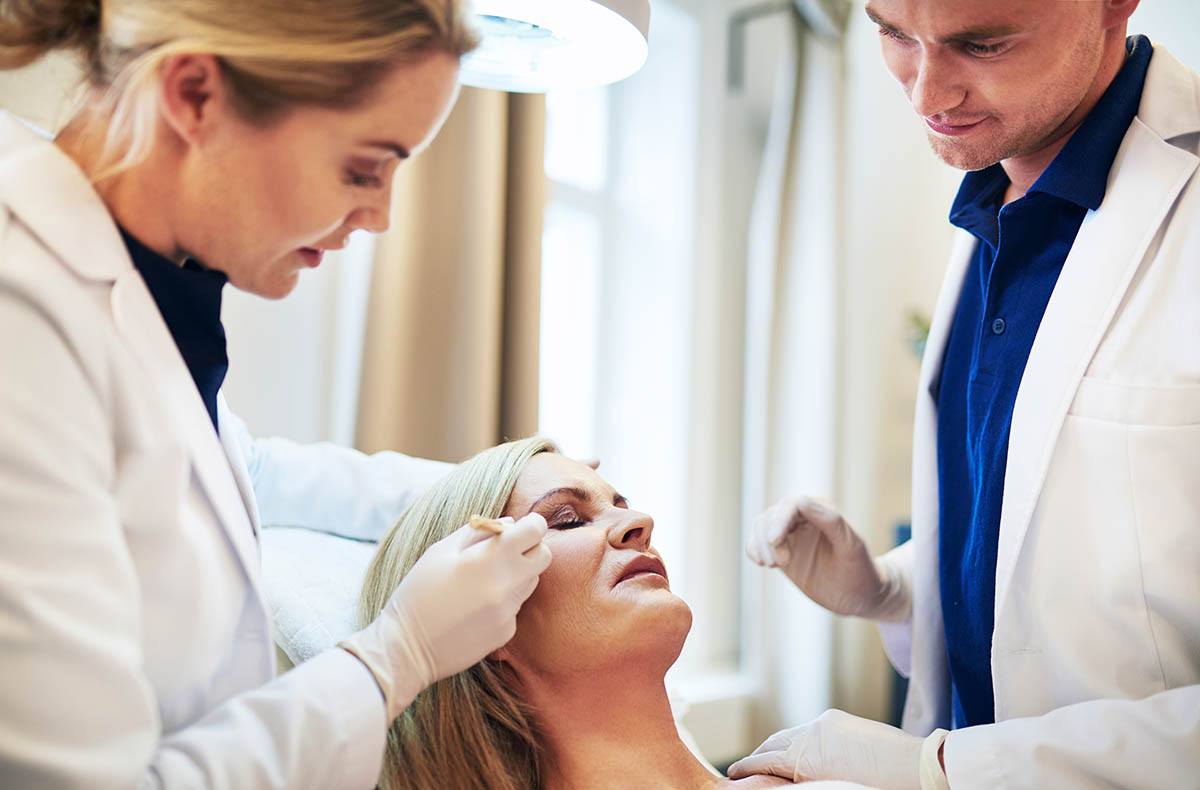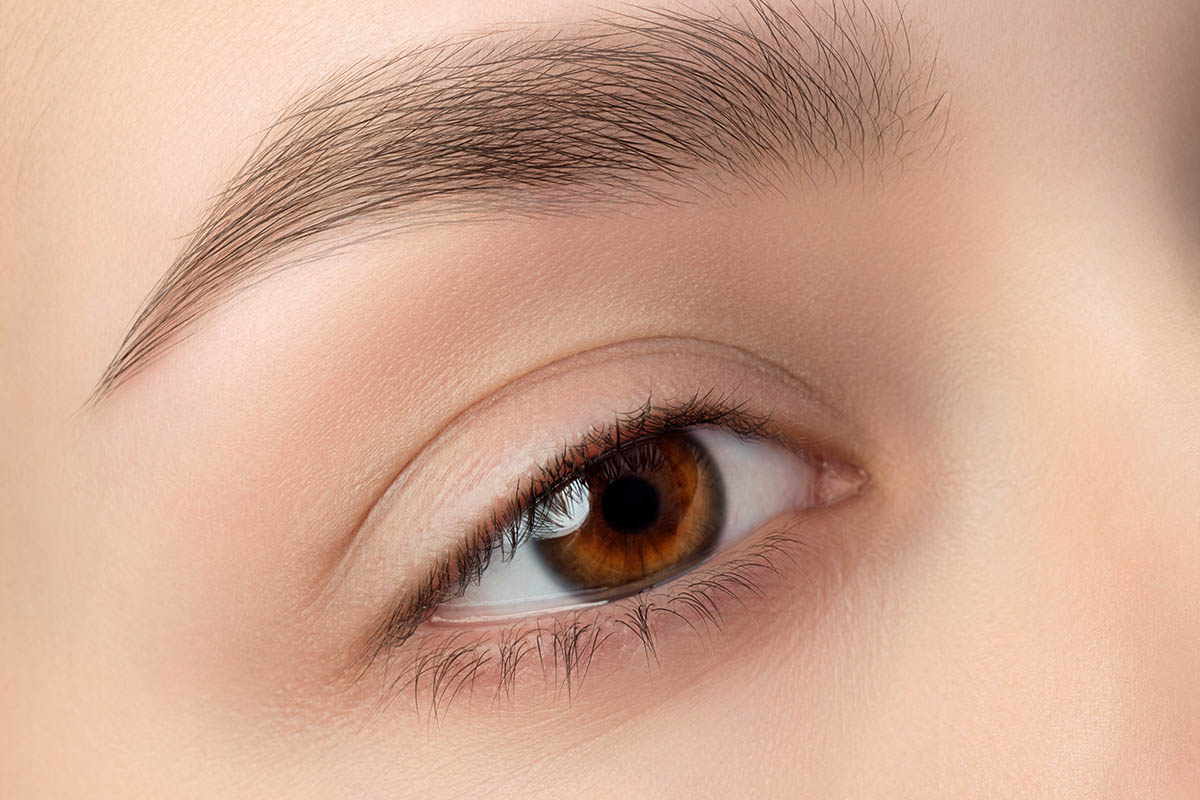Droopy eyelid ptosis or blepharoptosis is a condition that refers to sagging of the upper eyelid in one or both eyes. It can partly or even completely blocking vision. Lid ptosis is often caused by weakness or stretching of the levator eyelid muscle. It may also affect appearance. Droopy eyelids can make someone look tired and older then they are. The condition occurs in both children and adults.
This sagging of the eyelid not only may block the vision but it can cause amblyopia (lazy eye), or double vision.
Table of Contents
Congenital Ptosis
It is caused by incomplete development of the muscle that raises the eyelid/levator/. In most cases, ptosis is an isolated problem, but it is possible children with congenital ptosis may have problems with the mobility of the eyeball, neurological diseases, eyelid tumours. If congenital ptosis is not treated it will not improve over time. Also, the presence of ptosis suggests damage to the cranial nerve.
Acquired Ptosis
Acquired ptosis occurs at a later age. It can be caused by external injuries and burns, as well as changes that occur with age and disease. The most common acquired ptoses occur in adults as a result of degenerative tissue changes. The levator muscle of the upper eyelid weakens and sagginess.
Acquired Ptosis is most often due to:
- Natural ageing processes that cause loosening of the tissues around the eyelid. It is also known as senile ptosis;
- A weakness of the muscle lifter of the upper eyelid, which can be a result of various diseases;
- Tumour, edema, an inflammatory process after surgery;
- It may occur as a result of a trauma which damaged the upper eyelid muscle and nerve;
- Due to the ageing process, the skin may sag and droop over the eyes.
Symptoms and signs of ptosis
The most obvious sign of eyelid ptosis is a drooping eyelid. Depending on how hard the lid closes, people with ptosis and muscle weakness may have difficulty seeing. Often times they tilt their heads back to try to see under the hood or raise their eyebrows repeatedly to try to raise their eyelids.
The characteristic symptoms of the condition are:
- a visible drop in the upper eyelid;
- eye fatigue resulting from the patient’s attempts to keep the eyes fully open;
- double vision;
- difficult to close the eyes.
If you think you may have ptosis, compare a recent photo of your face to 15 or 20 years ago and you will most likely notice a difference in the skin of the upper eyelids.
Ptosis treatment

The treatment of congenital ptosis is operative. It is recommended to be done in preschool age (3-7 years). Puberty is not a suitable period for surgery. Often patients with congenital ptosis undergo an operation in old age. In cases of severe ptosis, surgery should be performed at an earlier age to overcome the development of amblyopia, also known as lazy eye. Children with mild congenital ptosis, in which the eyelid does not interfere with vision, are monitored by a specialist.
The treatment of acquired ptosis depends on the severity of the disease. If it does not affect the vision it might be not treated at all.
People with acquired ptosis may also undergo an operation due to aesthetic reasons. Plastic surgery is usually the best treatment for drooping eyelids.
There are different surgical techniques for eyelid correction. Two of the most common are ptosis repair where the surgeon tightens the ptosis muscle to lift the eyelids, giving the patient improved vision and appearance and blepharoplasty where the excess skin is removed.
Ptosis surgery in Singapore
Ptosis correction is suitable for people that have droopy eyelids and the eyes do not look fully open. The procedure tightens the muscle of the eyelid to raise the eyelid into a more open position. Ptosis surgery is usually done as an outpatient procedure. It is performed under local anaesthesia which makes the recovery process faster. The operation is with little or no sedation. The strategy for ptosis surgery depends on the diagnosis of the type of ptosis, the severity of the ptosis, and the relative strength and function of the levator muscle.
The procedure is performed in the following steps:
- an incision is made in the crease of the upper eyelid skin or the inside of the eyelid;
- one of the muscles of the upper eyelid is tightened or reattached to the upper lid with stitches or surgical adhesive ;
The final position of the eyelid depends on how the tissue heals.
Blepharoplasty
Blepharoplasty surgery is used to correct droopy eyelids caused by ageing. This surgical procedure is also done under local anaesthesia. Unlike ptosis repair, blepharoplasty removes excess skin or puffiness around the eyelids. Blepharoplasty removes the subcutaneous fat to reveal the eyes behind them. The incision is made in the natural eyelid crease and the doctor removes the redundant skin and muscle. Dissolvable sutures are placed in the incision line following surgery. The procedure takes roughly 45 minutes to an hour to do.
What is the difference between ptosis surgery and blepharoplasty?
Ptosis surgery has a 90 % success. It means that 10 % of the time the patients have to go back and either tighten or loosen that eyelid muscle to correct the eyelid height after initial surgery is done. Blepharoplasty has close to a 99 % success rate. Once the skin and fat are removed this problem is taken care of and the patient no longer has to worry about it anymore. That is the main difference between ptosis correction and blepharoplasty.
The specialists often combined both procedures ptosis surgery and blepharoplasty, to remove redundant eyelid skin as well as tighten the muscle that helps elevate the eyelid, raising the eyelid margin out of the patient’s line of sight and back into its normal anatomic position.
Which procedure is right for you?

During a consultation with a doctor, he will not only look at the eyelid but he will look at the eyebrow and how much-redundant skin is on the upper lid. He will also look at the relationship of the eyelashes to the coloured part of the eye or the iris. All of these components can lead to droopy eyelid. The patients can have brow ptosis that causes a droopy eyelid, or they can have a low eyelid margin where the lashes come out of the eyelid leading to droopy eyelids. Patients may have all of these conditions or may have just one so the plastic surgeon needs to choose the right treatment and to address the problem.
What are the risks of droopy eyelid surgery and blepharoplasty?
Both surgery techniques are pretty safe. There are not many complications. The usual complications that encounter from any operation include bleeding, infection, and scarring but probably one of the most specific that happens with ptosis repair or blepharoplasty is the inability to close the eye. It can be due to many reasons such as the muscule gets tighten too much or too much skin gets removed.
There is a risk of the eyelashes to feel numb which is normal. That’s due to tiny little nerve roots being severed throughout the course the procedure which is normal.
Postoperatively patients can expect about a week or so of swelling and bruising, the eyelid may look not the way the patient wants it.
Some complications may happen later in the postoperative period, such as eyelid malposition, over-and-under–resection of the skin, or orbital fat. Ptosis after upper blepharoplasty might resulting in lid asymmetry.
How long does ptosis take to heal?
It can take a week or two in order to really see results. Statistically, about 60% to 70% of any bruising or swelling is gone after the first week, and close to 80 to 90% is gone after the second week.
The aftercare process is important for optimizing recovery surgery. Unless otherwise instructed, the patients apply a cold compress to minimize swelling for the first 48 hours after surgery. Generally, patients should take a few days off for healing, and dissolving sutures. It is recommended to wear a ptosis eye patch for the first few days.
The healing process is very important for the outcome as well as the ability for the patient to go back to work or be seen during social events.
How much does ptosis correction cost in Singapore?
How much will eyelid surgery cost in Singapore depend on many factors such as type of the procedure, the plastic surgeons’ fee, medications, and so on? The cost of ptosis surgery is between $6000 and $12000. The average cost for a blepharoplasty is $2500 to $5000.
Does insurance cover ptosis surgery?
Ptosis has been classified as a medical condition by the ministry of health so it is Medisave and insurance claimable. The doctors may do a specific workup in Singapore’s clinic to determine if a patient is a candidate for insurance to cover their surgery and that includes vision, visual field, a specific visual field, test to determine if the peripheral vision and super-visual field are affected by the redundant eyelid skin.

